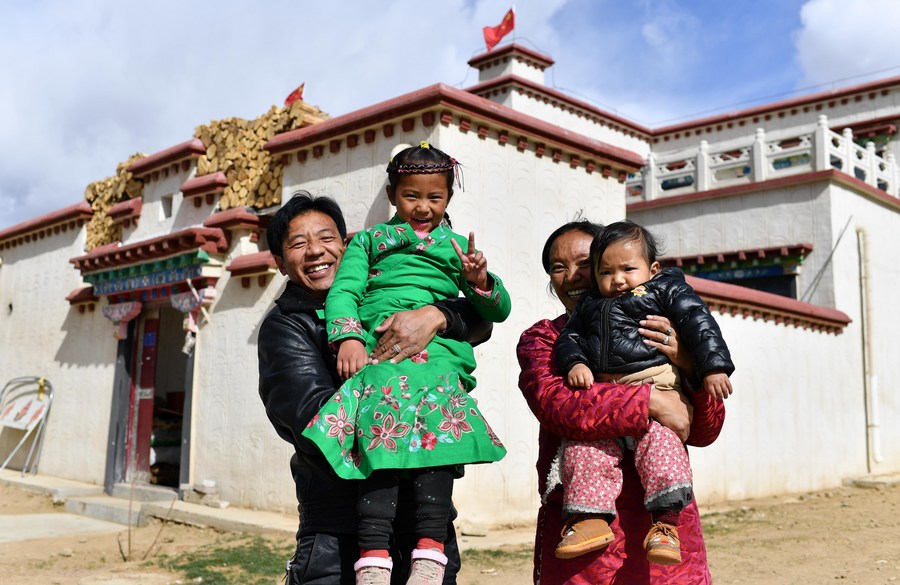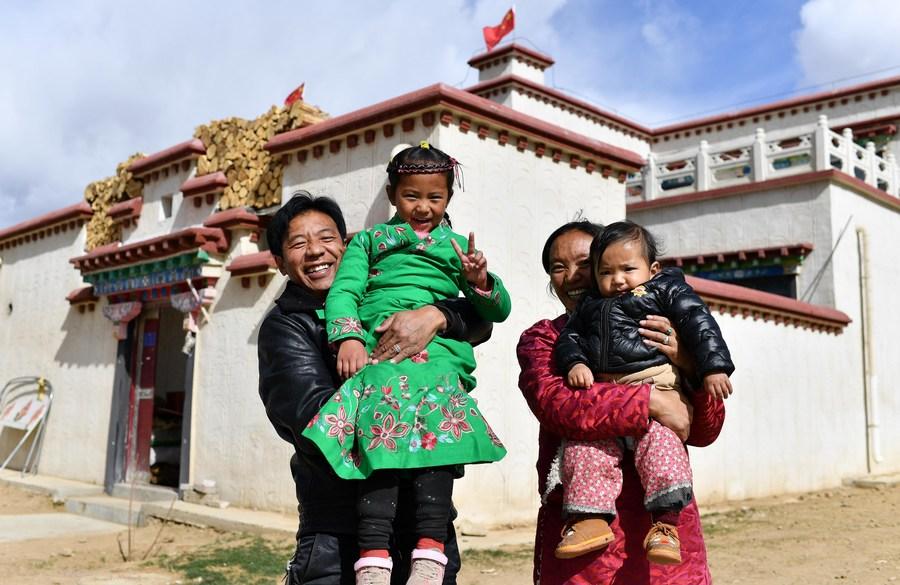
Nijia (1st L) and his family members pose for a photo in front of their house at the Rongma relocation settlement, a local poverty alleviation project, in Gurum Township of Lhasa, capital of southwest China's Tibet Autonomous Region, April 2, 2020. (Xinhua/Zhan Yan)
BEIJING, Sept. 28 (Xinhua) -- China adopted a targeted strategy to help poor people rise out of poverty and achieve moderate prosperity along with the rest of the country, according to a white paper released Tuesday.
By the end of 2020, all of the 99 million rural poor, and all of the 832 counties and 128,000 villages classified as poor under China's current poverty line, had shaken off poverty, said the white paper titled "China's Epic Journey from Poverty to Prosperity" released by the State Council Information Office.
The government has substantially reduced poverty in ethnic minority groups and areas, and the incomes and welfare of the registered poor in rural areas have improved substantially, according to the white paper.
The per capita disposable income of rural residents in poor areas reached 12,588 yuan (1,946 U.S. dollars) in 2020. This represents an average annual growth rate of 9.2 percent in real terms from 2013 to 2020, 2.2 percentage points higher than the average growth for rural residents nationwide.
In addition, their ability to keep themselves free from poverty has steadily increased, basic medical services are guaranteed for the poor, and access to safe drinking water has been ensured, said the white paper.




 A single purchase
A single purchase









